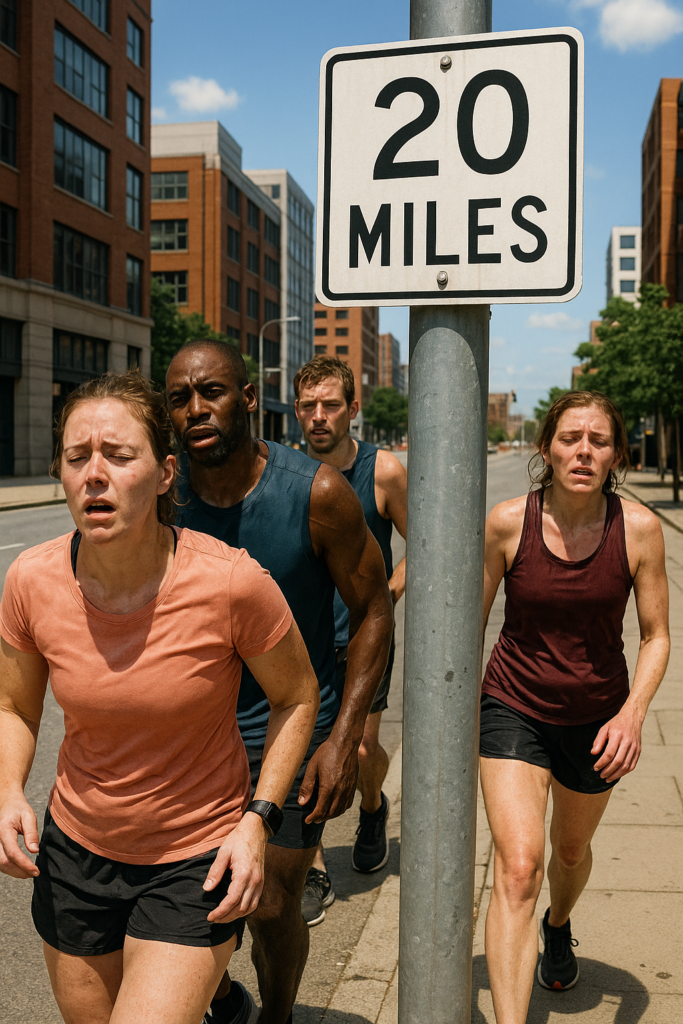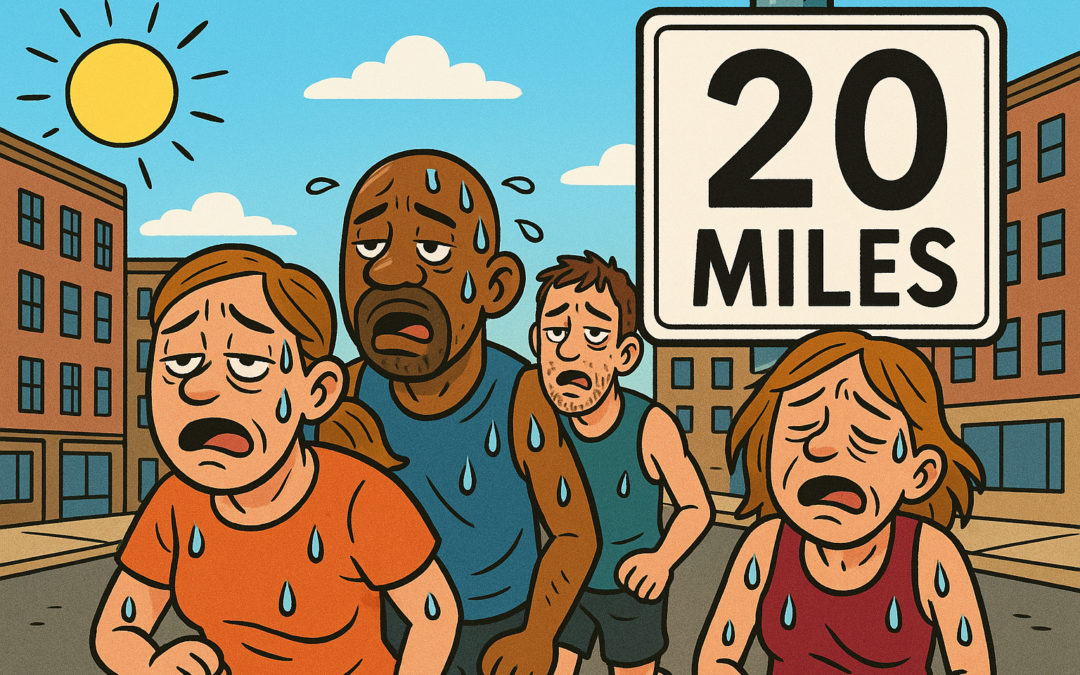By Coach Adolfo Salgueiro
As long-distance runners, we focus on the long-distance run. Obvious. For marathoners, that 20-miler has been a staple our training for decades. The psychological advantage of having achieved that distance starting with a 2 instead of a 1, when you are about to run 26.2, cannot be overstated.

Yet, there is no magic to be gained at 20 miles. If you train in kilometers, 20 miles is 32.18 Km, far from a round or memorable number. The “magic marker” for those who train in kilometers is 30, for the same psychological reason. This is equivalent to 18.64 miles. Nothing special to that figure either.
But, is there a physiological benefit from running a 20-miler or 30 kilometers, or two or three of them before your marathon? Does it apply to all marathoners? What does science say about this? How does all this apply to you and your training for your next marathon?
Let’s get into it.
While the confidence boost of having a 20 or 22 mile run under your soles is undeniable, its benefits are proven to diminish the longer you are on your feet. The elite Kenyans can cover the distance between less than two hours. The 3-hour runner can do it in 2:30-ish at an easier pace. But the 4-hour marathoner may take 3:45 at an easy pace. You can see the progression.
According to scientific studies: “after running 3 hours the aerobic benefits (capillary building, mitochondrial development) aren’t markedly better than when you run two hours.” This means that a 3-hour run will provide as much aerobic benefit as a 2-hour run. So you will accumulate additional fatigue and need a longer recovery before resuming your normal training.
I’ve read about coaches that do not prescribe 20-mile runs for anyone looking to run over 3:45 in the marathon. Others say 3:30 or even less. Remember that coaching is the intersection between art and science. An art based on science, not a science per se, so trial and error are part of the deal.
In my professional experience, runners that will run their marathons on the slower side than 3:30ish, will benefit from back-to-back runs that will allow accumulated fatigue to do its thing without breaking down the body too much. A long run today followed by a “longish” run tomorrow, where you accumulate from 18-22 miles in a weekend, produces better results than plowing through that mileage in one push.

This is not to say that for certain runners, at a certain level of fitness, with a certain goals and with enough time to recover, may not benefit from a 20-miler. And I am not discounting the psychological benefit either. What I am stating is that the 20+ miler is not the key to achieve your marathon goals if you are not on the faster side.
Coach Jeff Gaudette, from Runners’ Connect, wrote recently that one of the two primary reasons why runners get injured is “orogressing their training volume and running speeds at a pace that their body is not ready to handle. Or, as coach Jay Johnson would technically define it, ‘metabolic fitness precedes structural readiness’”.
Before you ask, the other reason is structural imbalances and/or bio-mechanical issues.
Coach John Davis, a PhD in biomechanics at Indiana University’s School of Public Health, provides the following recommendations when it comes to the long run in a marathon training cycle.
- Don’t overemphasize the long run, especially when training for the marathon. Not only do aerobic benefits flat line after 2 hours of running, but as this research shows, injury risk increases significantly.
- Think prehab rather than rehab. Work on strengthening known or potential weak areas in your running mechanics.
- Fix flaws in your running form that become exacerbated during long runs. Improving posture, learning to generate proper hip extension, and fixing overstriding can help prevent many potential injury issues.
In conclusion:
The long run continues to be an essential element of the marathon training. There’s no way around it. But contrary to what has been drilled to us for so many years, the qualifying aspect of the long run is time, not necessarily mileage. It is not the longer the merrier. It is the longer you can run without hindering your recovery, the merrier.


Very valuable opinion, also well founded.
Even though for me at 87 it may too late, I must confess that the conclusion , which I accept, is contrary to my extended beleif and practice. Maybe in my next life I might take your advice!
Excellent article
Thank you for being a ready of my blog, Coach!
Just finished reading Jack Daniels running formula and at the end of the book he talks about back to back long runs. I will definitely add this to my repertoire. Thanks for the great read coach.
Back-to-back long runs are very good, yet are not for everybody either. They key with any training is to be open minded, flexible, and ready to make adjustments when something you try either works out, or doesn’t.
Excellent coach Adolfo. Coming from many months of minimal running, I have been back since early June, adding only 1 mile more each week to avoid injury.
Your blog is excellent!
Thank you.
Thank you for your input Nancy. You are an experienced runner so it means a lot.
Coach, I truly believe believe this. I tell people this to each each own.. it’s not for everyone. I follow back to back to back long runs. I recall you coached me for Tokyo and Boston same plan with a little adjustments here and there. Thank you! 🙌🏿🙌🏿✔️
That is a very good point. You did not do 20 milers and successfully completed Tokyo and Boston. It is not for everybody.